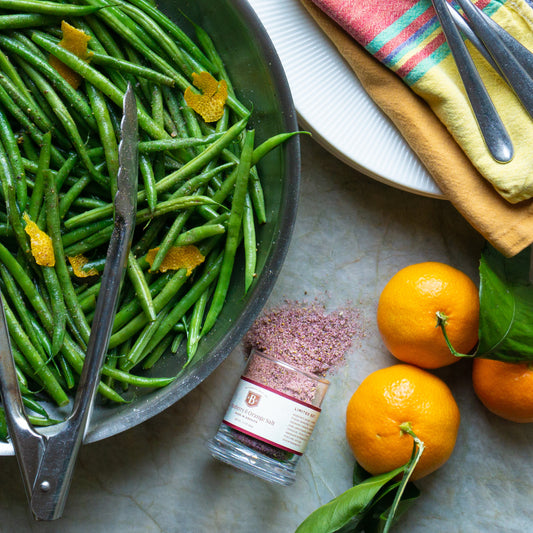It is the green thing to do, but I was disappointed that the box it ships in is all the packaging there is. There's no internal container so everything is directly in the shipping box, with the mailing label and cut shipping tape (since I opened it for a peek). There's nothing to take out of the box and have on the counter or table as a nice looking basket.
That being said, I'm very pleased with the selection of chocolates inside, and I do think less packaging is better.
I contain multitudes :)
Truly delighted!
Thank you for your kind words! We are thrilled to hear that you enjoyed our Meadow Wine and Flowers Dark Chocolate. It's one of our faves!
I bought this for making ice cream this weekend from Salt & Straw’s cookbook. I used it in scrambled eggs this morning, and it’s wonderful.
The combination of taste treats in this confection are unbelievable - each bite is an individual taste treat?
The pasta, jarred peppers, and Tellicherry peppers were substituted in my box, which was a bit disappointing (mainly disappointed about the Tellicherry peppers, which were substituted with a straightforward salt & pepper blend). I'm not opposed to customization as I like the Mystery/Custom chocolate boxes, but this kit was supposed to be a present for someone so I was expecting the products provided in the description. The gift receivers are fairly serious home cooks so I was hoping to give them items that were high quality and unusual. This box satisfied the former but perhaps not the latter.
Francesca,
Thank you for taking the time to leave a review for our Pasta Salad Kit. We apologize for any disappointment caused by the substitutions in your box, particularly the Tellicherry peppers.
We would love to make things right by shipping you a replacement kit with the original ingredients as described. At the time of shipment, we had a high demand for this particular new kit, and unfortunately, we had to make substitutions due to limited availability. We apologize for any inconvenience this may have caused.
Thank you for your understanding, and we hope to have the opportunity to provide you with a better experience in the future.
Best wishes,
The Meadow






